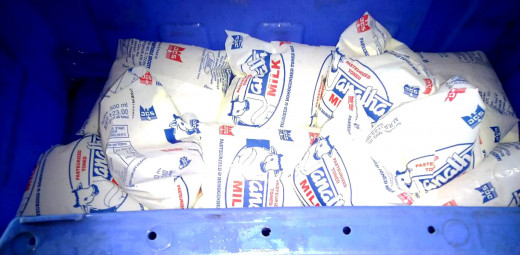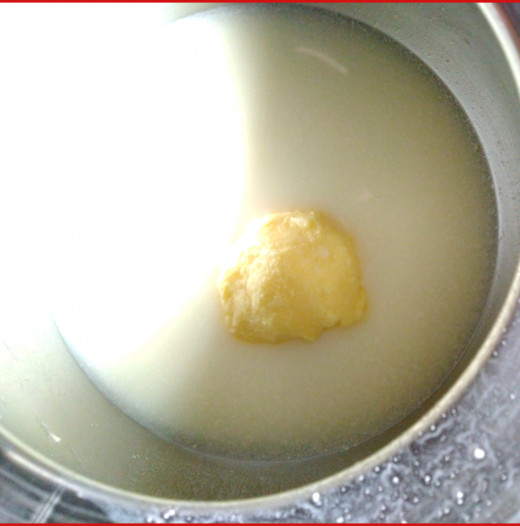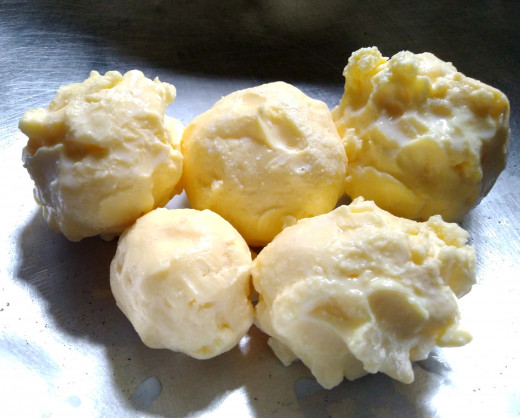The Journey of Milk in Association With the Polythene Covers to Households in India

Cows milk
In Indian households, especially in rural areas, men and women do a lot of hard work to produce milk and other dairy products. When milk and milk-based products are available, about one-fourth of the diet comes from milk-based products.
People in these areas believe that the cattle are an inseparable part of the family. One or two members of a family live their life for the cows. They do not move too far from household properties. Even if they go, will return back immediately, to feed and quench the thirst of these cows. In the event of movement to faraway places, they entrust the farm responsibilities to a reliable person.
Every white liquid is not milk. This is said like this, because, in earlier days, milk of lime was stored in households in pots. During those times, milk and buttermilks were also stored in earthen pots. Astonishingly synthetic milk was prepared by miscreants by using sodium bicarbonate, vinegar, shampoo and palm oil mixed with water. Artificial sweetening agent was added to taste this liquid like milk.
Milk in the Universe
Milk is appreciated in many ways in mankind. Milk is the attribute of purity. Therefore, we say, "as white as" and "as pure as milk". Nourishment attributes also arise from milk. We appreciate the fairness of skin as milk and as soft as the milk cream. Even galaxy in the universe is considered as Milky Way, in which our Earth is a tiny celestial body or planet. Milky Way of common urban Indian is the plastic packet of milk from local milk cooperative. Now. it is time to identify your real "Milky Ways".
Cow's milk is only next to mother's milk
The journey of milk
Punctuality of farmers
The farmers get up very early in the morning. Those who have more cows get up too early, by 4 AM in the morning and even before doing anything, they feed the cows as a ritual with some natural grass or hay stalk. Then from 5 AM they milch the cows and then feed cattle feed and water and a lot of fresh grasses and dry hay. I think the 5 AM Club was influenced by the milkman!
Hygienics
Washing the cows, cleaning the cowshed and washing hands and vessels are also part of the milkmen daily routine before starting mulching. They know hygienic is very important for milk-related aspects. Otherwise, more than anyone else, the cows and the milkman suffer. Washing the hands and washing the udders are also very important aspects. But, one non-hygienic batch in the whole lot has the potential to contaminate the complete container load. Therefore each end every milk collection centres are following strict procedures such as filtering, water analysis, fat quantity and the specific gravity of individual purchases.
Milching
Milching is a process, which has to be completed quickly. Once the dictation initiates, within eight minutes the milcher completes the process Then it is filtered to remove any small impurities and further processes initiated. In the households, the milk is immediately pasteurized by boiling it on the stoves or in a milk cooker.
Some are now using the milch machine for easy mulching. However, milk yield is the daily accomplishment of the farmers.
Storage
Traditionally, farmers don’t keep the milk for more duration, indigenous knowledge tells that milk has to be boiled soon after collection. Even boiled milk will not be stored for more than three hours. By that time the next process. In some parts of India, people go for making plain cheese, some go for curdling and making butter and ghee. What is collected by the milk cooperatives, goes to the homogenisation and chilling plant.
No plastics
The dairy development board and the milk cooperatives insist not to use any plastics. Milk cans made of plastic, plastic gaskets in cans and plastic dispensers are not allowed. Journey up to milk procurement centre to customer’s house is in two phases. The first is a dairy development perspective. The next is customer service linked marketing perspective.
Entry of plastic
From the chilling plants, milk was distributed in glass bottles during the 1970s. With the white revolution and expansion of the marketing and packaging revolution, milk got the pouched metamorphosis.
Polyethene packaging has made it possible to carry milk even in pant pockets and office bags. Transportation of milk is possible in distribution crates for quick delivery. Refrigeration is easy because of the plastic pouches.
| Nutrition Facts | |
|---|---|
| Serving size: 250 ml | |
| Calories | 150 |
| Calories from Fat | 72 |
| % Daily Value * | |
| Fat 8 g | 12% |
| Carbohydrates 12 g | 4% |
| Sugar 12 g | |
| Protein 8 g | 16% |
| * The Percent Daily Values are based on a 2,000 calorie diet, so your values may change depending on your calorie needs. The values here may not be 100% accurate because the recipes have not been professionally evaluated nor have they been evaluated by the U.S. FDA. | |
Health issues
Milk is having good taste and aroma when it is fresh. It is a colloidal substance and the colloid tends to precipitate if it comes in contact with air for a long time. If the milk gets broken, it loses its quality and utility.
- Polythene packaging also poses a lot of health issues.
- Polythene releases substances during storage, which are harmful.
- Taste of milk gets reduced in polythene covers
- Infants don’t like the packaged milk
- Kids develop respiratory congestion by regularly having packaged milk
- The overall and indirect causes of polythene packaging are not fully understood.
Tips for parents of kids
- Tips to the users based on the above real facts are, find a source of fresh milk in your neighbourhood.
- If you can have a stainless steel milk can, that is the best alternative for plastics
- Honour the cows and the milkman, who are working hard for your nutrition.
- Value of milk, when compared to the health benefits, over and above the packaged milk, is far-flung. So be generous to obtain freshness of the product for your family.
- To the extent possible always keep milk and milk products at room temperature in aerated lids, so that you will enjoy the freshness.
Cleanliness, every time drying and sunlight exposed disinfecting of vessels is important to avoid the bad odour of the product over time.
Curds, yoghurt and Ghee
When you get fresh milk, you can always make cuds, yoghurt, and cheese. Only need for making curds and yoghurt is the appropriate starter. You can now get the starters in the market in pure form. If it is difficult to get from the market, you need to borrow some fresh buttermilk or yoghurt from the neighbour.
Once you get curds, you can make health buttermilk, butter in your home. Now all the required implements are available in the online shops, including curdling pot, curd churner, butter container, etc.
Butter when washed with water and boiled to evaporate water, we can have fresh ghee. After boiling for about 10 minutes, the residues become brown and start sticking to the bottom of the container, your ghee is ready.
Once you start making these things for yourself, your family including kids, you feel that you have a treasure of items which are homemade and natural, without adulteration. Your family will love you for the uniqueness of the fresh materials as compared to artificial-looking market products. Instead of using aged, toned and stabilized milk, it is far better to use natural dried organic milk powder of good quality from reliable supplier.


This content is accurate and true to the best of the author’s knowledge and is not meant to substitute for formal and individualized advice from a qualified professional.
© 2019 Halemane Muralikrishna







